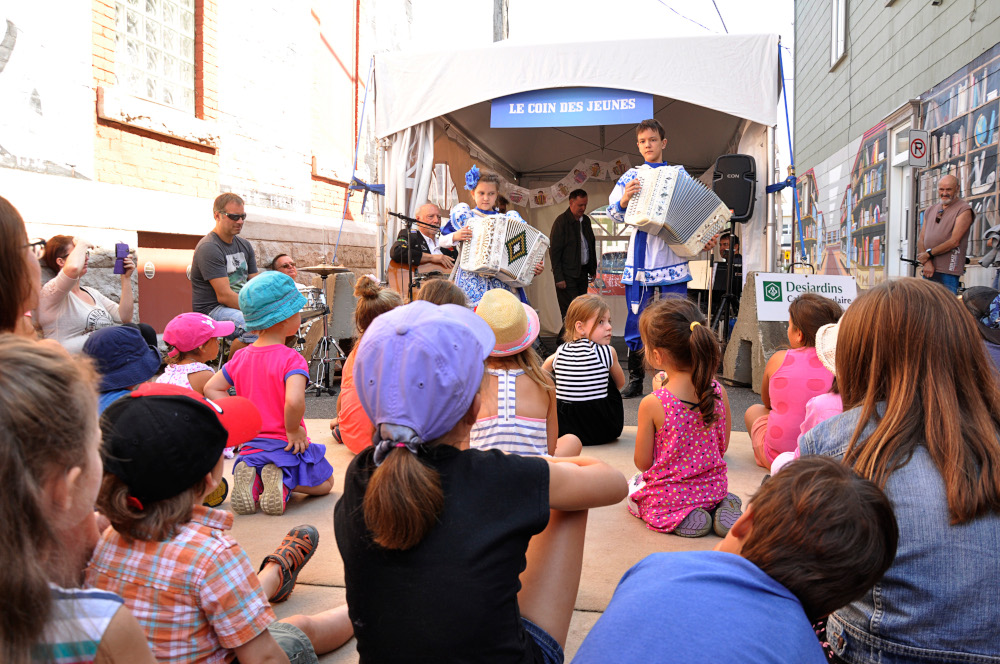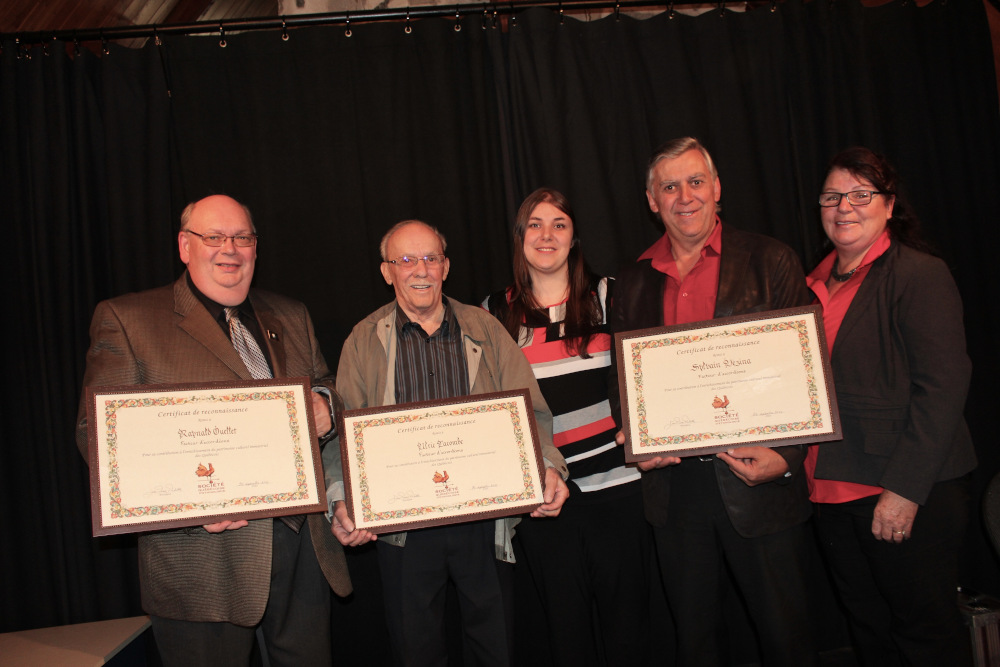2009–2018: A Promising Future
The École internationale de musique and the younger
In 2018, the Carrefour mondial de l’accordéon celebrated its 30th anniversary. Held over five days, the festival always coincides with Labour Day weekend. It features more than 30 concerts and other activities. There have been many important developments over the last decade, including the creation of the École internationale de musique in 2009. By offering classes on various instruments for all ages and skill levels, this school provides yet another way for the Carrefour mondial de l’accordéon to foster a passion for music. Furthermore, the diatonic accordion classes offered by the school reflect a desire to promote and pass on the region’s musical heritage.
Since 2010, younger musicians have been able to take part in the Carrefour mondial de l’accordéon by performing in the Coin des jeunes. This youth program gives participants a chance to share the stage with artists from the region and from around the world.
Raúl Barboza
In 2008, the Carrefour mondial de l’accordéon achieved another major coup when it booked chromatic accordionist Raúl Barboza. He is a recognized master of chamamé. This genre of folk music mixes Indigenous Guaraní rhythms with mazurkas, which are waltzes and polkas brought by 19th-century European immigrants to northern Argentina. Barboza never fails to enchant his audiences with his mastery of the accordion. Having released more than 30 albums, he has played on nine movie soundtracks. He has also completed several international tours, including one in Japan and another in Russia. In 1995, he received the Francisco Canara Award from the Sociedad Argentina de Autores y Compositores de Musica, in recognition of his contributions to the international dissemination of Argentinian music.
Raúl Barboza— (captions available in both FR and EN) View the video with a description
Tradition Bearers
In 2016, accordion making and playing were recognized as elements of Montmagny’s intangible heritage under Quebec’s Cultural Heritage Act. The City of Montmagny and the Carrefour mondial de l’accordéon had jointly applied for this designation, which represents a first step toward national recognition. The accordion’s heritage status helps underscore the instrument’s importance for Montmagny. The designation also serves to highlight how playing styles, accordion-making techniques and the traditional music repertoire have been passed down from generation to generation for more than a century.
Working in partnership with the Carrefour mondial de l’accordéon, the Société d’ethnologie du Québec has applied for the diatonic accordion to be recognized as part of Quebec’s national intangible heritage.



